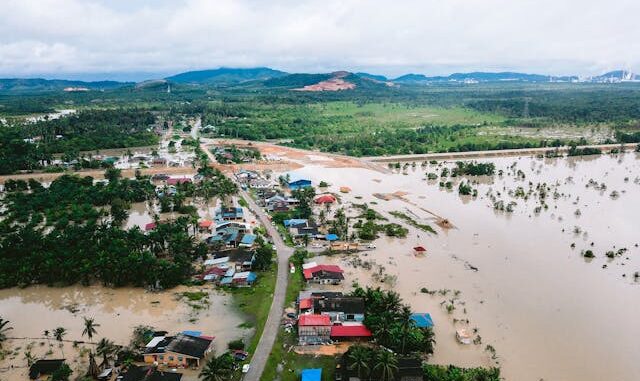
Understanding Climate-Based Insurance
Climate-based insurance represents an innovative approach to mitigating the financial impacts of extreme weather events. Central to this model is parametric insurance, which operates differently than traditional insurance methods. Instead of assessing damages after an event occurs, parametric insurance automatically triggers payouts based on predefined environmental criteria. This forward-thinking system aims to provide timely and efficient financial assistance to those affected by climate-related disasters.
In the context of parametric insurance, payouts are linked to measurable parameters such as rainfall levels, wind speeds, or drought indices. For instance, if a specified amount of rainfall is recorded within a certain timeframe, policyholders can receive a pre-determined payout without the need for extensive claims processes. This contrasts with standard insurance, where insurers typically require detailed assessments of damage before any compensation is disbursed, often leading to delays in receiving funds during crucial times.
The parametric model utilizes real-time data, which can be gathered from a variety of sources, including satellite technology and weather monitoring stations. By leveraging such advanced technology, insurers can quickly verify conditions met within agreed parameters, ensuring that payouts are both timely and accurate. This proactive mechanism not only fosters a sense of security among policyholders but also enhances the resilience of communities facing climate vulnerabilities.
The benefits of climate-based insurance are substantial. With faster payouts, affected individuals can swiftly access funds to address imminent needs, such as repairing homes or securing food and water supplies. Moreover, by simplifying the claims process, this insurance model reduces administrative burdens on insurers, ultimately leading to cost savings that can be passed on to consumers. Overall, as India moves forward with climate-based insurance initiatives, the parametric model promises to be a critical component of its strategy for addressing the pressing challenges posed by climate change.
The Need for Climate-Based Insurance in India
Over the past three decades, India has experienced a significant uptick in extreme weather events, highlighting the urgent necessity for climate-based insurance as a safety net. According to recent studies, the country has witnessed an alarming increase in the frequency and intensity of natural disasters, such as floods, droughts, and cyclones, leading to considerable loss of life and economic hardship. In fact, the National Disaster Management Authority (NDMA) reported that over 1,000 lives are lost annually to climate-related disasters, with economic damages ballooning to approximately $9 billion each year.
Regions like Punjab, Assam, Odisha, Uttarakhand, and Jammu have been hit particularly hard by these extreme weather conditions. For instance, Assam has faced devastating floods that not only displace populations but also severely impact agriculture, one of the state’s primary livelihoods. Similarly, the coastal state of Odisha has witnessed repeated cyclones, causing extensive damage to infrastructure and ecosystems. In Uttarakhand, the increasing incidence of landslides and flash floods has posed a serious risk to both lives and property, calling into question the resilience of local communities.
The exacerbation of vulnerabilities in these areas can be directly linked to the ongoing impacts of climate change, including rising temperatures and shifting monsoon patterns. As weather patterns become more unpredictable, traditional risk management strategies are proving inadequate. The need for innovative solutions such as climate-based insurance is therefore crucial. Such financial instruments can provide timely compensation for damages incurred due to climatic events, helping mitigate the economic fallout and enhancing community resilience. This form of insurance not only secures livelihoods but also plays a pivotal role in promoting adaptive measures necessary for addressing climate change challenges in India.

Potential Impact of the Climate Insurance Initiative
The implementation of a nationwide climate-based insurance scheme in India is poised to effectuate lasting change across various sectors, especially for communities that are most vulnerable to climate-related disasters. The initiative is designed to provide a robust safety net, shielding farmers and urban residents from the financial shocks that accompany extreme weather events. By reducing the economic burden of climate impacts, this insurance scheme can lead to improved resilience among affected populations.
Firstly, this initiative is expected to deliver direct benefits to farmers who are frequently impacted by unpredictable weather patterns, crop failures, and adverse conditions. With access to climate insurance, farmers can manage unforeseen losses more effectively, ensuring a more stable income and enabling investments in sustainable agricultural practices. Additionally, the initiative may encourage farmers to adopt climate-resilient crops, fostering a culture of adaptation that is crucial in an era of climate uncertainty.
Moreover, the climate insurance initiative has the potential to reshape disaster response systems in India. By providing timely and accessible financial support, it allows government agencies and nonprofit organizations to focus on preventive measures rather than solely on post-disaster recovery. This shift can streamline disaster management efforts, fostering coordinated responses that not only address immediate needs but also aid in long-term recovery and resilience building.
On a broader scale, the economic implications for the country are significant. A systematic and well-implemented climate insurance program can catalyze investment in infrastructure, technology, and sustainable practices. Enhanced financial stability can lead to increased consumer confidence, positively impacting economic growth. As communities adapt and recover more swiftly from climate-related events, India may see a transition toward more resilient socio-economic structures, reinforcing the importance of proactive measures in the face of climate change.
Challenges and Considerations for Implementation
The successful implementation of a climate-based insurance program in India necessitates careful navigation through a number of challenges and considerations. A primary concern is the reliability and availability of data. Accurate data is essential for modeling climate risks and determining appropriate premiums. However, in many regions, especially rural areas, there is often a lack of comprehensive and high-quality data concerning weather patterns and socio-economic factors. This inconsistency could lead to inadequate coverage and potentially undermine the entire insurance scheme.
Furthermore, to support policyholders effectively, a comprehensive system must be established to assist individuals in understanding and navigating the new insurance frameworks. This includes the need for accessible resources and support networks that can educate potential policyholders about the benefits and intricacies of climate-based insurance. There exists a significant need to tailor these resources to address disparities in socioeconomic status across different regions, as those with fewer resources may have a harder time adapting to new risks associated with climate change.
Public awareness also plays a critical role in the adoption of climate-based insurance. Without a clear understanding of the purpose and advantages of such programs, stakeholders may be reluctant to participate. Therefore, extensive outreach and educational campaigns are essential to engage the public and build trust in these new models. Collaboration with local communities and organizations could enhance outreach efforts, ensuring that information reaches those who are most affected by climate-related risks.
Looking ahead, several future steps must be prioritized to ensure the effective rollout and sustainability of the climate-based insurance program. This entails establishing robust monitoring and evaluation frameworks, fostering partnerships with private sector players, and securing government support to enhance overall resilience to climate variability. By tackling these challenges strategically, India can pave the way for lasting and impactful climate-based insurance solutions.

